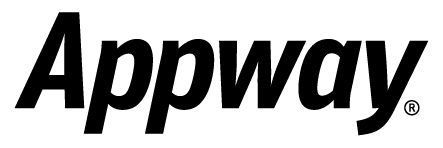Developer Blog |
For Appway 6.2, our team of designers worked on streamlining the design of the Appway Workspace. But what do we mean when we refer to the "Workspace"? This post, the first in a series, explains the Workspace concept and the thinking behind it.
If you’ve used PowerPoint, you know that the application has two different modes: the "edit" mode - where you see a list of slides, and can add, edit and remove slides as required; and the "slide show" view, where you actually present your deck. Activate the "slide show" mode, and the normal application window disappears. PowerPoint takes over the whole screen, and starts showing the presentation you’ve built.
Appway works the same way.
The Studio is where you build the solution. Like PowerPoint’s edit mode, this is where you create and delete Business Objects, and make changes to them. This is where you build your Appway solution.
The Workspace is where you run the solution. Like PowerPoint’s presentation mode, this is where you see your work in action, and where end users access your Appway solution.
Appway’s Studio is mostly used by trained developers. The Workspace, on the other hand, is used by a broad range of company employees and company clients. Employees may be new to the company, and not know exactly how everything works yet. Clients expect clear, straightforward forms that do not require them to be in constant contact with the company in order to figure out what is required of them. Employees and clients alike want the same ease of use from Appway as from any other app they use on a daily basis.
This means that Workspace usability is extremely important. Whether a company has built a short simple solution or a large, complex solution, everybody – regardless of their skills or training – should be able to use the Appway Workspace successfully.
That’s why we invest a lot of time into getting the Workspace’s usability right. Appway 6.2 ships with a completely new Workspace design, and includes some completely new components that can be used to build Appway solutions.
In the coming weeks, our series of Workspace Design Notes will talk about various different aspects of the new Workspace design, and introduce the thinking behind some of the changes we’ve made.
If you’ve used PowerPoint, you know that the application has two different modes: the "edit" mode - where you see a list of slides, and can add, edit and remove slides as required; and the "slide show" view, where you actually present your deck. Activate the "slide show" mode, and the normal application window disappears. PowerPoint takes over the whole screen, and starts showing the presentation you’ve built.
Appway works the same way.
The Studio is where you build the solution. Like PowerPoint’s edit mode, this is where you create and delete Business Objects, and make changes to them. This is where you build your Appway solution.
The Workspace is where you run the solution. Like PowerPoint’s presentation mode, this is where you see your work in action, and where end users access your Appway solution.
Appway’s Studio is mostly used by trained developers. The Workspace, on the other hand, is used by a broad range of company employees and company clients. Employees may be new to the company, and not know exactly how everything works yet. Clients expect clear, straightforward forms that do not require them to be in constant contact with the company in order to figure out what is required of them. Employees and clients alike want the same ease of use from Appway as from any other app they use on a daily basis.
This means that Workspace usability is extremely important. Whether a company has built a short simple solution or a large, complex solution, everybody – regardless of their skills or training – should be able to use the Appway Workspace successfully.
That’s why we invest a lot of time into getting the Workspace’s usability right. Appway 6.2 ships with a completely new Workspace design, and includes some completely new components that can be used to build Appway solutions.
In the coming weeks, our series of Workspace Design Notes will talk about various different aspects of the new Workspace design, and introduce the thinking behind some of the changes we’ve made.
Comments (0)



